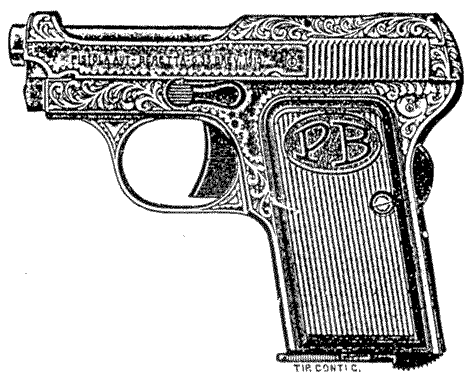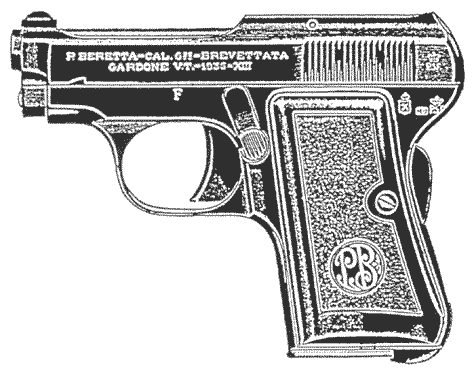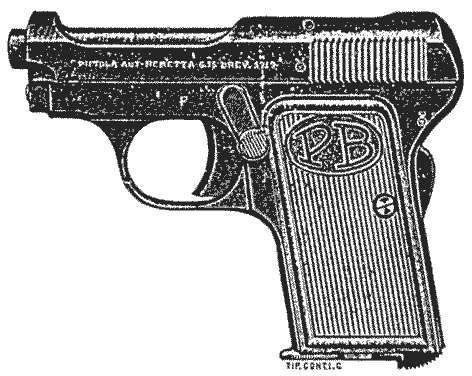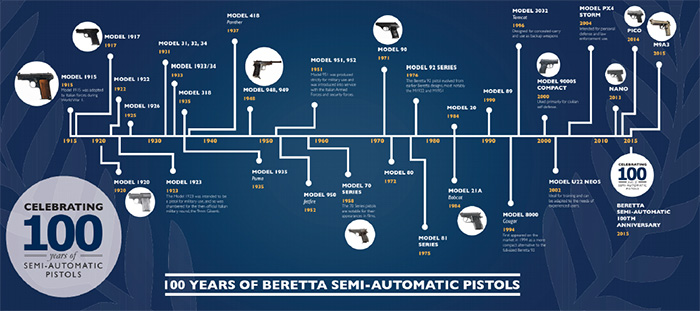Beretta Web - Beretta Pistol models: 1920 to 418
We
do not know exactly in which year Beretta began producing its first
6.35 calibre pocket pistol. The dates suggested by various sources
range between 1919 and 1922, but it is possible that these guns
were already being planned before the First World War. The exigencies
of wartime naturally demanded that precedence be given to other
products which were better suited to military needs. Therefore work
on the little 6.35 was resumed only at the end of the conflict.
The first version of this gun was very similar to the Model 1922;
nearly a scale model in fact, with the single but important innovation
of the spring-loaded firing pin which took the place of the internal
hammer. Mechanically, this constituted a step backwards compared
to the larger calibre model, and was probably taken due to considerations
of size. In every other way the two pistols are identical, and share
the trigger mechanism fitted with an escaping disconnector which
is typical of all Beretta pistols of that period.A short time afterwards
the second version of the 6.35 calibre Model 19 appeared, with an
automatic grip safety fitted on the frame backstrap. Presumably
this device was added with the aim of overcoming the reduced level
of safety which is inherent in guns with a striker type of firing
pin. |
|
Mod.
1920
I
version
Serial
numbers from 100000 to around 106000 |
Mod.
1920
II
version
Serial numbers from around 106000 to around 112000 |
Mod. 1920
II
version
Serial numbers from around 112000 to around 155000 |
Mod.
1926
Serial numbers from around 155000 to around 187000 |
|
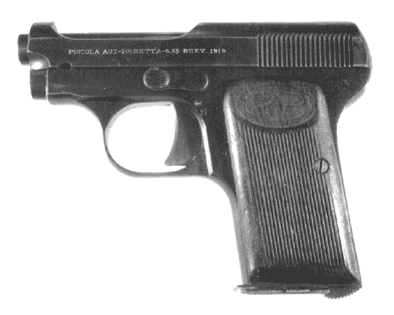 |
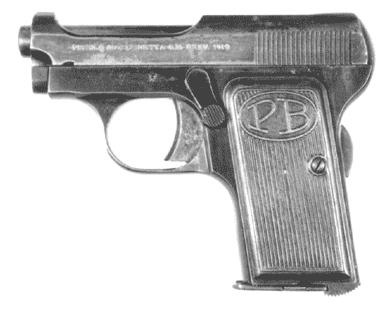 |
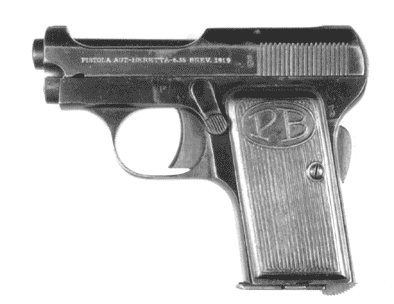 |
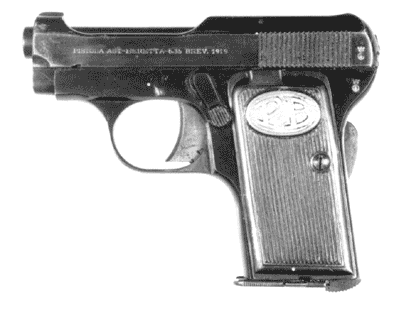 |
|
|
In
1926 a third version of the 6.35 calibre pocket pistol was introduced,
in which the workings of the firing mechanism were completely
redesigned to incorporate a disconnector similar to the one used
in the 1923 model. It was a simple and economical modification,
which contributed to the fame and commercial success of this automatic
pistol. The innovation involved a slight modification to the left
grip, and can easily be seen without the need to dismantle the
gun. With these improvements the pistol can almost be considered
a new model, the Model 1926.
The only modifications that followed were small cosmetic changes,
which for the most part involved the design and material of the
grips. The name was changed, however, to become first the Model
1926-1931, and later the Mode] 1934. In any case these various
model numbers can be found only in the Beretta catalogues. Ali
the guns manufactured up to the mid-1930s are marked simply «BREV.
1919», and subsequent models until the end of the war are
marked «Brevettata», with no further details. On similar
guns produced immediately after the war we find the same «Brevettata»,
but more often the abbreviation «Brevet». |
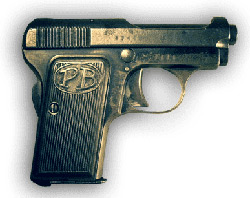 |
As
we have seen the production of 6.35 calibre pocket pistols continued
from the beginning of the 1920s until the middle of the 1930s
before Beretta felt the need for a change (apart from the mechanical
alteration in 1926). Towards 1935, however, the appearance of
this pistol must have seemed hopelessly outmoded, and an improvement
in the design of the handgrip was proposed, making it similar
to that of the Model 1934. Later afterwards a cocked firing pin
warning was also introduced. This consisted of an extension to
the pin itself which extended from the back of the slide when
it was in the cocked position. Apart from this, the «small
Berettas remained more or less unchanged in that most of the essential
parts the barrel, magazine, etc. are interchangeable. |
|
|
|
This
very successful gun remained in production until the middle
of the 1950s, overlapping with the production of the more sophisticated
guns which Beretta had developed in the meantime. Towards the
end of the 1940s a frame in light alloy was also developed for
this pistol. Slight aesthetic modifications were added shortly
afterwards, evidently to inject new life into a product which
had been born more than 30 years earlier.
|
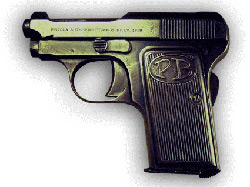 |
|
Mod.1926-31
I
version
Serial
numbers from 187251 to around 198000
|
Mod.
1934
Serial
numbers from around 603700 to around 608300 |
Mod.
318
Serial
numbers from around 609000 to around 610000 |
Mod.
418
Serial
numbers from around 611000 to 658016, from 10001A to 99999A,
from 00001C to 46410C |
|
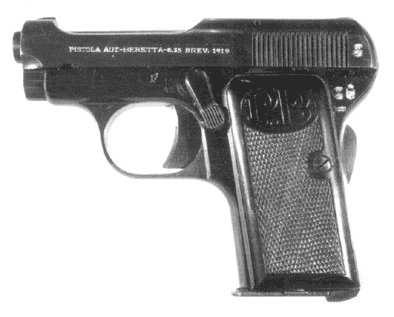 |
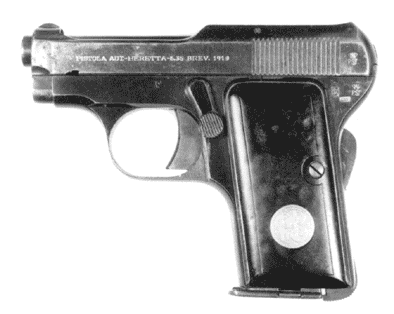 |
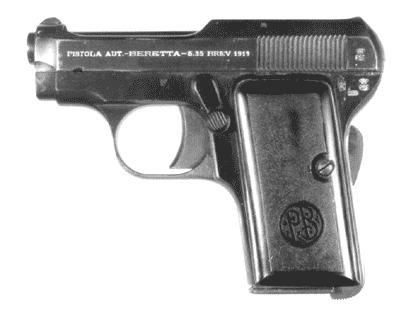 |
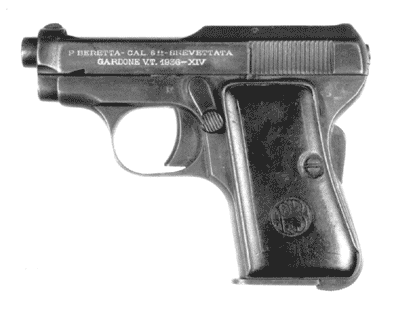 |
|
|
|
|
|












